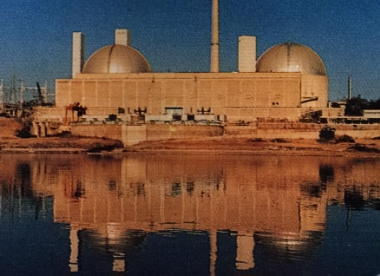Russian nuclear fuel cycle companies have been celebrating achievements in the domestic and international sphere with the delivery of the first uranium pellets to India under a new contract and the completion of a new sulphuric acid plant.
 |
| Rajasthan NPP - final destination (Image: NFC) |
India has a long-established nuclear power program with plans to grow its current 3779 MWe of nuclear capacity to 20,000 MWe by 2020 and to supply 25% of its electricity from nuclear power by 2050. However, for over 30 years its was excluded from international nuclear technology and materials trade because of its status as a non-signatory of the Nuclear Non-Proliferation Treaty. With only limited indigenous uranium resources, a lack of fuel has long been a problem for the country's nuclear power plants.
Following the lifting of trade restrictions in 2008, a $700 million contract signed in February 2009 will see TVEL supply low enriched fuel pellets for two boiling water reactors (BWR) at the Tarapur nuclear power plant as well as the PHWRs. It will also supply fuel to India for the two Russian-designed VVER-1000 reactors being built at Kudankulam. French nuclear company Areva has also signed a long-term deal to supply uranium for India's reactors.
Acid plant for Priargunsky
Meanwhile, Russia's biggest uranium mining company has completed a new sulphuric acid plant. ARMZ subsidiary Priargun Mining Chemical Combine's new $30 million, 180,000 tonne per year plant, is "one of the biggest sulphuric acid plants in Siberia and the Far East", according to AtomEnergoProm. The plant is due to be officially opened in June 2009 and replaces a facility built in 1976 which, according to AtomEnergoProm, had "exhausted its resources". Sulphuric acid is used to leach uranium from ore.
Priargun Mining Chemical Combine - often referred to as Priargunsky - operates in the Chita region of south-eastern Siberia. With its current output of around 3000 tonnes of uranium per year, the company produces the lion's share of Russia's domestically produced uranium. Russian production is currently around 3500 tonnes but ARMZ, the holding company which manages all Russian uranium mining companies including Priargunsky, has ambitious plans to exploit the country's uranium reserves, tripling production to 10,300 tU per year by 2015, and aiming for 20,000 tU per year by 2024.




_18570.jpg)
_16159.jpg)
_18938.jpg)
_33584.jpg)





